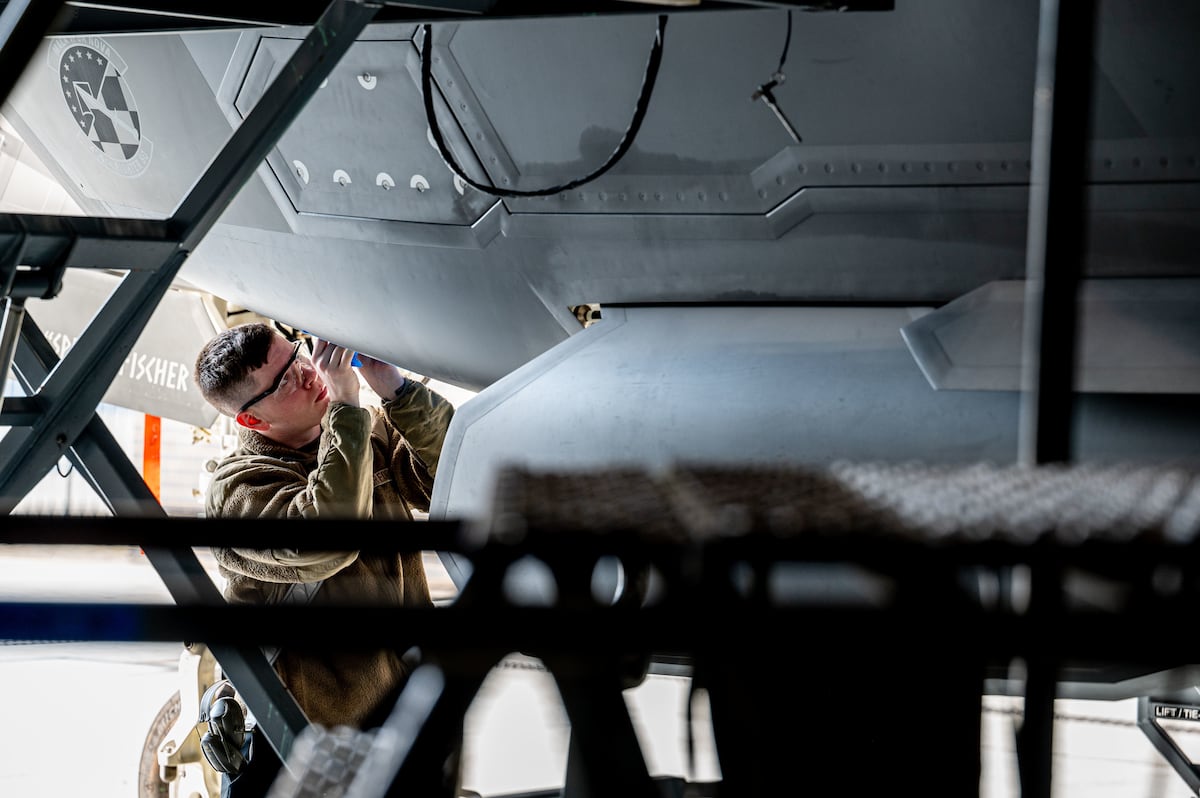Key Takeaways
- Global MRO costs for military aircraft are expected to rise from $97 billion in 2025 to over $111 billion by 2035.
- The increasing prevalence of advanced aircraft, especially the F-35, will significantly impact MRO expenditures.
- Governments must balance higher readiness against rising maintenance costs as military technology evolves.
Cost Implications for Military Aircraft Maintenance
A recent report by consulting firm Oliver Wyman indicates that the global market for military aircraft maintenance, repair, and overhaul (MRO) is poised for significant growth. Projected to reach over $111 billion by 2035, this market showed a stable figure of about $97 billion in 2025, maintaining a flat trajectory over the past six years. Analysts Doug Berenson, Livia Hayes, and Ian Ferguson highlight that spending will increase at approximately 1.4% annually, influenced by the rising complexity of military aircraft.
One major driver of these increasing MRO costs is the introduction of sophisticated platforms like the F-35 Joint Strike Fighter. The F-35 offers advanced capabilities, including stealth technology, but comes with higher operational costs due to its complex avionics, propulsion systems, and materials, requiring more extensive service hours. Lockheed Martin has delivered over 1,170 F-35s globally, and the U.S. Air Force has procured about 471 of these jets, with intentions to acquire a total of 1,763.
Currently, approximately 310 fighter jets are bought annually by global militaries, with around half being F-35s. This aircraft represents only 2.2% of the global fleet today but is anticipated to grow to 4.7% in the next decade. The report mentions that by 2035, the F-35 will contribute to 9.5% of global MRO spending, more than double its current share.
The U.S. Air Force is also investing in emerging technologies such as sixth-generation aircraft, notably the B-21 Raider and the F-47 fighter. Furthermore, they plan to incorporate over 1,000 semi-autonomous drones, termed collaborative combat aircraft, to enhance operational capabilities.
European and Asian militaries are exploring similar advancements, with the report urging these nations to factor MRO costs into their budget planning as new technologies are rolled out. It cites examples of complex airframes, such as the Airbus A400M Atlas and NHIndustries NH90 helicopter, which are expected to enter military service soon.
Currently, advanced aircraft form about 11% of global military fleets, projected to rise to 17% in the next decade. Notably, NATO countries allocate 16% of their MRO budgets to complex aircraft, a figure forecasted to climb to 26% by 2035. The growing significance of drones, particularly highlighted by their use in the ongoing conflict in Ukraine, also contributes to increasing MRO expenditures. Over the last five years, major air forces added 350 drones, increasing the total to over 1,400. This number is expected to more than double in the next decade.
The report emphasizes the need for governments to carefully manage the balance between maintaining aircraft readiness and controlling escalating maintenance costs. It advises military planners to ensure a diverse supply chain for spare parts to avoid reliance on dwindling sources, a challenge already affecting older models like the B-52 Stratofortress. Furthermore, the choice between original equipment manufacturers and third-party services for MRO—while potentially more efficient—often comes at a higher cost.
If military forces cannot correctly budget for growing MRO expenses, there may be broader repercussions for their airpower capabilities. An example cited is the U.S. Air Force’s recent cutbacks in flying hours while focusing on modernization, raising concerns about declining mission capabilities. The report concludes that as the Air Force prioritizes new technologies, it carries inherent risks regarding readiness and operational effectiveness.
The content above is a summary. For more details, see the source article.















